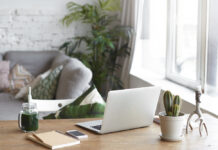If you ask most business owners, employers and managers what a top priority is in terms of personnel management and human capital, they’re likely to say employee productivity. Just having employees to fill space isn’t enough. Employees need to be operating at a peak level of productivity for them to bring value to their employer.
Productivity is important because human capital is often the biggest investment and resources a business has. You want to maximize your ROI for any investment, and that includes employees. When employees are productive, it can improve brand image, customer relations and loyalty, and revenue.
When employees aren’t productive, it can have all the opposite effects.
Employers are often searching for ways to improve workplace productivity, yet they overlook something important—office design. Office design can play a big role in how productive—or unproductive—employees are.
The following are some tips to help you boost employee productivity through office design.
Bring Back the Cubicle
The idea of a cubicle has been synonymous with not so positive connotations, to the point that a lot of employers went the complete opposite route and introduced the open workspace.
Employees, as it turns out, don’t necessarily like this. If you find your employees seem disengaged and unproductive, you might want to think about adding new office cubicles.
Despite how popular the open work environment has become in recent years, there’s been research showing it’s not always the best option.
Employees tend to prefer having places where they can go to focus and concentrate without the constant distractions that occur in an open workspace.
However, that doesn’t mean that open, collaborative spaces don’t have their place in a productive workplace. What tends to work well is a mix of spaces.
The design of an office can integrate spaces for collaborating, brainstorming and working together, but also quiet areas for more focused work.
Give Employees a True Break Space
Everyone needs breaks throughout the day. Having breaks is important to stay focused over the long-term. Employees need a place where they can relax, even if it’s just for five minutes every few hours.
Think about incorporating a true breakroom into your office design. Don’t make it cluttered with papers and boxes, or in some dark corner. Try to make it a place that will allow employees to recharge when they need it.
Cut the Clutter
Speaking of clutter, the more clutter you can eliminate in the workplace, the better for productivity. Clutter can be draining on the senses of employees, and it makes their minds feel as cluttered as their surroundings.
What works better in terms of engagement and productivity is a simple, clean and airy space.
Promote Health
The way you design a workspace for your employees can promote their health and well-being or hinder it. Make open pathways that encourage employees to get up, walk around the office and avoid being too sedentary. Think logically about the paths employees are most likely to use to get from one point to another and encourage walking whenever possible.
You can also include a snack bar in your office design if space allows. It doesn’t have to be fancy, but you can stock it with simple, healthy treats.
Eliminate Noise
The idea of noise goes back to the open office concept in some ways—noise is undoubtedly one of the biggest productivity killers. From side conversations to ringing cell phones, think creatively in your office design about how you can block and mitigate noise. Maybe you soundproof an area of the workspace where people can go to have meetings or conversations.
Some employers are going so far as giving employees noise-canceling headphones because loud work environments have that much of a detrimental impact on their productivity and engagement.
Finally, if you’re not sure what the optimal office design for your employees is, go to the source. Go directly to your employees and ask for their input as far as what they’d like to see in the design of the office, and the general layout.
What’s great about modern office furniture is that it’s often modular and can be changed and shifted as the needs of your office and employees change.
Also, encourage employees to make their workspace their own. If they’re going to be more productive by having their own ergonomic chair, or a sit-stand desk, encourage that. Having productive employees is the ultimate goal, and employees spend a huge chunk of their life at work so let them find the ways to work that make them feel good.
Find a Home-Based Business to Start-Up >>> Hundreds of Business Listings.















































